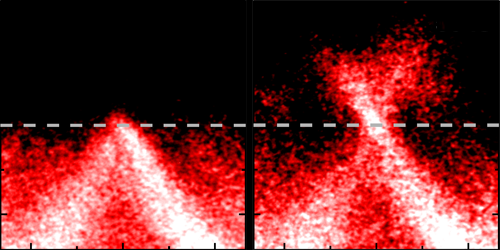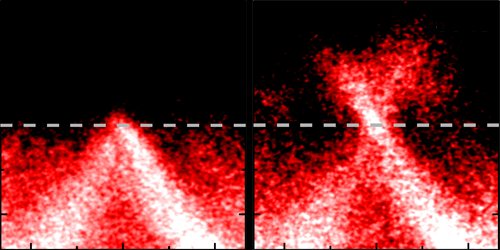Fresh Light on Nonthermal Electrons
A light pulse hitting the surface of a conductor transfers much of its energy to electrons in the material, sending them to excited states for a fraction of a second. Characterizing how the photoexcited electrons return to thermal equilibrium would be relevant for applications in ultrafast optoelectronic devices, but it is challenging because the timescales involved are extremely short. Now, a team at the University of Kiel, Germany, led by Michael Bauer, has tracked how the electrons in graphite evolve during the 50 femtoseconds (fs) that follow excitation by a light pulse, revealing the primary processes at play in this largely unexplored time window.
In their experiments, the authors aimed a short (7-fs) light pulse at a freshly cleaved sample of graphite and then performed time- and angle-resolved photoemission spectroscopy to image the sample’s electronic structure as it evolved in time. With a resolution of a few femtoseconds, the team was able to identify different phases following light excitation: a first stage where the electrons are rapidly driven out of equilibrium by the energy influx; a second stage of energy and momentum redistribution driven by specific electron-electron and electron-phonon scattering processes; and a third stage, starting 22 fs after the pulse, in which the electrons approached thermal equilibrium thanks to cooling by the phonons. The authors observed that this last stage started with the highest-energy electrons and progressed gradually until, after 50 fs, all the electrons were in thermal equilibrium at an effective temperature of several thousand kelvin. This high-time-resolution approach could be applied to study ultrafast electron dynamics in other materials with promising optoelectronic properties.
This research is published in Physical Review Letters.
–Nicolas Doiron-Leyraud
Nicolas Doiron-Leyraud is a Corresponding Editor for Physics.





